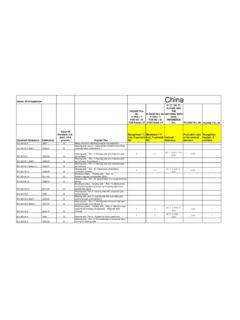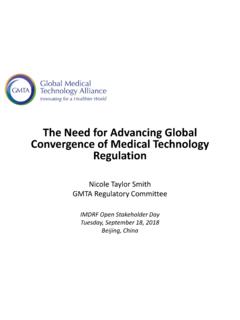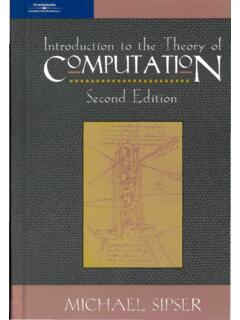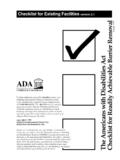Transcription of IMDRF/AE WG/N43FINAL:2017 (Edition 2)
1 IMDRF/AE WG/N43 FINAL: 2017 . ( edition 2). Final Document Title: IMDRF terminologies for categorized Adverse Event Reporting (AER): terms, terminology structure and codes Authoring Group: IMDRF Adverse Event Terminology Working Group Date: 21 September 2017 . J. Patrick Stewart, IMDRF Chair This document was produced by the International Medical Device Regulators Forum. There are no restrictions on the reproduction or use of this document; however, incorporation of this document, in part or in whole, into another document, or its translation into languages other than English, does not convey or represent an endorsement of any kind by the International Medical Device Regulators Forum.
2 Copyright 2017 by the International Medical Device Regulators Forum. IMDRF/AE WG/N43 FINAL: 2017 ( edition 2). Table of Contents 1. introduction 4. 2. Scope 5. Use of the Adverse Event Reporting Terminology 5. Intended End Users of the Adverse Event Reporting Terminology 5. 3. References 5. 4 Adverse event terminology 6. Adverse Event Reporting 6. Adverse event terminology used in adverse event reporting 6. Basic considerations regarding terms, codes and hierarchical coding structure 6. The four sets of terminologies comprising the complete adverse event reporting terminology 8. 5. Maintenance of adverse event terminology 13.
3 Annex A: Medical Device Problem Terms and Codes 15. Annex B: Cause Investigation Type of Investigation Terms and Codes 16. Annex C: Cause Investigation Investigation Findings Terms and Codes 17. Annex D: Cause Investigation Investigation Conclusion Terms and Codes 18. (Full Annex text published in separate documents). 21 September 2017 Page 2 of 18. IMDRF/AE WG/N43 FINAL: 2017 ( edition 2). Preface This guidance document was produced by the International Medical Device Regulators Forum (IMDRF), a voluntary group of medical device regulators from around the world. The document has been subject to consultation throughout its development.
4 There are no restrictions on the reproduction, distribution or use of this document; however, incorporation of this document, in part or in whole, into any other document, or its translation into languages other than English, does not convey or represent an endorsement of any kind by the International Medical Device Regulators Forum. 21 September 2017 Page 3 of 18. IMDRF/AE WG/N43 FINAL: 2017 ( edition 2). 1. introduction This document has been prepared by the IMDRF Adverse Event Working Group, charged with developing a harmonized terminology for reporting adverse events related to medical devices including in-vitro diagnostics (IVDs).
5 Widespread use of a single, appropriate adverse event terminology and coding system is expected to improve signal detection by adverse event management systems enabling a faster response by both industry and regulatory authorities. Use of defined terms as well as associated codes to describe problems encountered with medical devices provides several benefits: (1) it improves the accuracy of capturing and reporting of medical device related adverse events;. (2) it reduces ambiguity and hence increases effectiveness of the evaluation process; and (3) it is readily usable, in contrast to narrative text, for more sophisticated approaches to signal detection ( the identification of potential novel risks) and trending analysis by incident management systems including advanced querying functions and data visualization.
6 Thus enabling a faster response by both regulatory authorities and device manufacturers. A globally harmonized terminology and associated codes also has the following benefits: For manufacturers (including local distributors/authorized representatives): it provides consistency for manufacturers reporting to multiple jurisdictions, reducing the burden of managing multiple coding systems when preparing medical device adverse event reports for multiple jurisdictions;. For regulatory authorities: by providing common terms and definitions, it supports analysis of safety, quality and performance information in a manner that can readily be shared globally: common terms will increase accuracy and reliability of information exchanged about medical device adverse events between regulatory authorities, and may facilitate more rapid detection of potential safety signals when pooled at inter-regional levels.
7 For patients: it protects patients by enabling faster local and international response to medical device adverse events including those related to medical device malfunctions/deteriorations;. For healthcare providers: the use of common terms with manufacturers and regulators may enhance accuracy, reliability and utility of the reports, especially when larger datasets can be pooled and analyzed. It may also, provide terms and definitions, some of which are within a hierarchical form, to be used for adverse event reporting within or between healthcare facilities. 21 September 2017 Page 4 of 18.
8 IMDRF/AE WG/N43 FINAL: 2017 ( edition 2). 2. Scope Use of the adverse event reporting terminology This document provides the IMDRF terms, definitions and IMDRF alpha-numerical codes to be used for Adverse Event (AE) reporting concerning medical devices and in vitro diagnostics both pre and post market as described in section 5. Notably, the precise criteria for reporting adverse events are defined by each regulatory authority and are not subject to this guidance document. Reference is made to the relevant guidance documents of each jurisdiction and the GHTF document on Post Market Surveillance: Global Guidance for Adverse Event Reporting for Medical Devices (GHTF, 2006).
9 Intended end-users of the adverse event reporting terminology The set of terminologies outlined in this document are intended for use by: (1) reporters of adverse events which are obligated to be reported to the authorities in accordance with the relevant regulations of each jurisdiction;. (2) regulatory authorities, collecting and processing such information and related data in databases and other electronic systems to monitor and analyze adverse events to improve the protection of patients and public health. Regulatory authorities may be national competent authorities (NCAs) or supranational bodies charged with these tasks.
10 3. References The following documents were used in the development of this document. ISO /TS 19218-1 Medical device- Hierarchical coding structure for adverse event . Part 1 Event type codes ISO /TS 19218-2 Medical device- Hierarchical coding structure for adverse event . Part 2 Evaluation codes GHTF/SG1/N70:2011 Label and Instructions for Use for Medical Devices GHTF/SG2/N54R8:2006 Post Market Surveillance: Global Guidance for Adverse Event Reporting for Medical Devices GHTF/SG2/N87:2012 Medical Devices: Post Market Surveillance: An XML Schema for the electronic transfer of adverse event data between manufacturers, authorized representatives and National Competent Authorities GHTF/SG5/N5:2012 Reportable Events During Pre-Market Clinical Investigations Event Problem Codes of the US FDA, which is available at.









